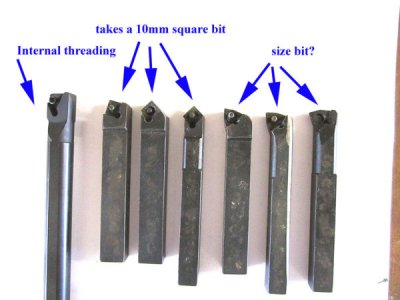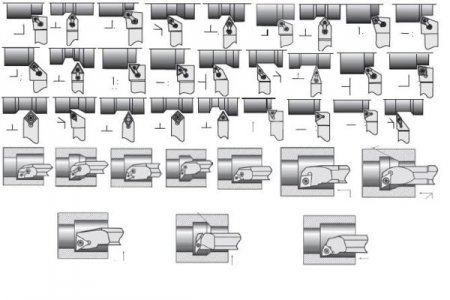- Joined
- Aug 22, 2012
- Messages
- 4,271
I'm in a "bit" of a quandary and desperately need some help.
I would like to try some carbide inserts but have absolutely no idea which ones to purchase.
I have come into possession (free) of a bunch of holders but with no inserts in them.
The internal threading holder is new and uses a torx screw fixing. From the centre fixing screw to the flat edge of the recess is around 4mm give or take a tad.
The other 6 use a cam lock except the end one that has been drilled out for some reason.
What from the gigantic selection of weird numbers would long time users suggest I should try?
most of my materials are mild steel, aluminium, stainless and brass.
Also any ideas what each tool should be used for? ie, facing, turning boring etc.
Thanks

I would like to try some carbide inserts but have absolutely no idea which ones to purchase.
I have come into possession (free) of a bunch of holders but with no inserts in them.
The internal threading holder is new and uses a torx screw fixing. From the centre fixing screw to the flat edge of the recess is around 4mm give or take a tad.
The other 6 use a cam lock except the end one that has been drilled out for some reason.
What from the gigantic selection of weird numbers would long time users suggest I should try?
most of my materials are mild steel, aluminium, stainless and brass.
Also any ideas what each tool should be used for? ie, facing, turning boring etc.
Thanks


